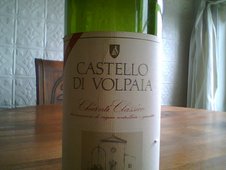They certainly are busy little bees over at High West Distillery. No sooner do they roll out a bottled barrel-aged Manhattan than they come out with two more new offerings: Double Rye and 12 Year Old Rye.
The 12YO needs no explanation. But what the heck is a Double Rye, aside from being something Ray Millard might order in "The Lost Weekend"? Well, it's a little bit old and a little bit young. More specifically, the liquor is a marriage of a two-year-old straight rye and a 16-year-old straight rye. Which would make it, what? 11? The two year old, who hails from Lawrenceburg Distillers in Indiana, has a mashbill with 95% rye and 5% barley malt. The sixteen year old, drawn from an old forgotten Fleishman's from Barton distillery in Kentucky, has a mashbill of 53% rye and 37% corn. The 16YO makes up about 5-10% of the blend.
According to High West, the Double Rye is taking the place of the distillery's Rendezvous label for a bit while the new batch ages. The Rendezvous is actually a "double rye" itself, when it comes down to it. It joins a 16-year-old rye with a 6-year-old. Call Double Rye Rendezvous' kid brother. It's an odd one. Good, and gutsy. The fighting, spicy two-year-old juice holds sway here, in my opinion.
According to High West, the Double Rye is taking the place of the distillery's Rendezvous label for a bit while the new batch ages. The Rendezvous is actually a "double rye" itself, when it comes down to it. It joins a 16-year-old rye with a 6-year-old. Call Double Rye Rendezvous' kid brother. It's an odd one. Good, and gutsy. The fighting, spicy two-year-old juice holds sway here, in my opinion.
If you're really interested in the 12YO, you have to get yourself to the High West Distillery and Saloon in Park City. That's the only place it will be sold, for $49.99/375ml. The distillery acquired five barrels of rye whiskey from the former Seagram’s Distillery in Lawrenceberg, Indiana. The barrels were originally destined for Japan in 2003, but the container was full and these five didn’t make the trip. The mash bill is 95% rye.














